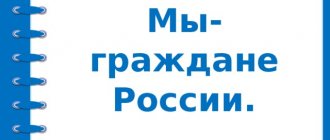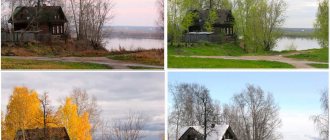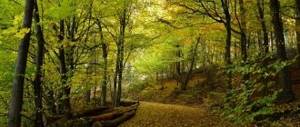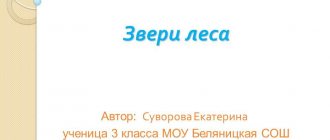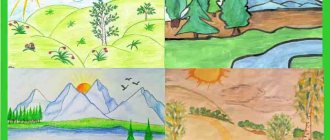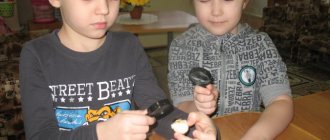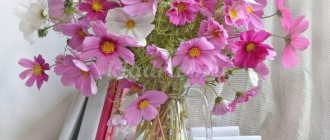Life of the ancient Slavs
Hello guys!
Today in class we will open with you the first page of the history of our Motherland and learn about the life of our ancestors - the ancient Slavs. Let's mentally travel back in time, one and a half thousand years ago (to the middle of the first millennium AD).
In the vast expanse of Eastern Europe at that time, endless dense forests grew, deep rivers and small streams flowed, and swampy swamps were encountered. In those days, these regions were inhabited by Eastern Slavs. The ancient Slavs lived in tribes
.
Along the middle reaches of the Dnieper lived the glades, to the south of the glades - the Ulichi, in the north-west - the Drevlyans, along the tributaries of the Dnieper - the Radimichi, between the Pripyat and the Western Dvina - the Dregovichi, in the west in the upper reaches of the Western Dvina and the Dnieper the Krivichi settled, and on the Oka - the Vyatichi. Around Lake Ilmen - Slovenia.
From the Eastern Slavs later came Russians, Ukrainians and Belarusians.
The time was restless, so they chose a safe, habitable place for settlement, near a river, somewhere on a coastal hill. Settlements usually consisted of several houses and were always protected from uninvited guests.
Most often, the ancient Slavs surrounded their villages with palisades. The stockade was built from thick and strong logs. They were driven into the ground next to each other. The ends of the logs were usually sharpened and fired over a fire for strength. Such a fence turned out to be very strong and served for a long time.
The dwellings of the ancient Slavs were made of wood
. They were half-dugouts.
The huts appeared a little later. In order to build such a house, they dug a large square hole about a meter deep. After the hole was dug, it was equipped with log walls. The roof was most often made with a gable roof (we still see such roofs in village houses today). Straw was used for covering. This resulted in a dwelling that was half in the ground, half above it.
The low door leading into the dwelling was made on the south side. Be sure to adapt the stairs to make it convenient to go down.
The inside of such a house was cool, dark and damp. The windows cut into the walls close to the ground were small. They were covered from the cold with boards, straw, and branches. The floor was most often made of clay.
In the corner of the house there was a stove that heated the house and on which food was cooked. She drowned herself in black. This means that there was no chimney coming from the stove, and the stove smoke came out through windows, doors, and holes in the roof.
The decoration of the house was unpretentious: a table and wooden benches. But despite the simplicity of the structure of such a dwelling, it was still possible to hide in it from bad weather and wild animals, warm up by the stove and cook food. The ancient Slavs used clay pots and frying pans as utensils.
The Slavs were strong, hardy people. Every day was full of labor worries.
The Slavs settled along the banks of reservoirs, so
one of their main activities was fishing
. There were a lot of fish in the lakes and rivers at that time. They caught it with nets and took only the large ones.
And life in the forests determined another activity - hunting
. At that time they hunted various game, which was found in abundance in dense forests: wild boars, bears, roe deer, foxes and other animals.
There were many wild bees living in the forests, so another activity was collecting honey from wild bees or beekeeping
. The word "beekeeping" comes from the word "bort", which means a hive in a natural or hollowed-out tree hollow.
The extracted honey was stored in linden tubs. Delicious delicacies were made from it and used in baking pies. Beeswax was used to make candles for lighting homes.
Gathering wild berries, nuts, mushrooms, herbs
also played a big role in the life of the Slavs. Mainly women and children were engaged in this trade. In the spring, when supplies ran out, young shoots and leaves of quinoa and nettle were collected. Quinoa often replaced bread; flat cakes were baked from it during times of famine. They also collected sorrel, wild cabbage, and wild onions.
Women also prepared food, set up vegetable gardens, weaved, spun, and sewed. Many of them skillfully practiced healing, preparing medicinal potions from herbs.
Life demanded unity from the Slavs. Together they farmed
.
The work of a farmer was very hard. To clear the land for arable land, the forest had to be cut down. The fallen trees were burned and the ash was used to fertilize the soil. The land was sown for 2–3 years in a row until it produced a good harvest. Then they moved to a new area.
The ancient Slavs were also engaged in cattle breeding
. They kept livestock in pens and barns located next to their homes.
The connection between generations was strong. Labor skills, knowledge and experience were passed from father to son, from mother to daughter.
Our distant ancestors lived in friendship and harmony with nature
. Everything around them seemed alive, animated: the wind, streams, rivers, trees, and forest.
The ancient Slavs believed that all natural phenomena were controlled by the gods
. One of the main gods was Perun - the god of thunder and lightning. In addition, according to the ideas of the ancient Slavs, Perun patronized warriors, they asked him for help before major battles, and he was revered after major victories.
The ancient Slavs populated the world around them with fantastic creatures.
. They believed that the house was guarded by a brownie. He was usually presented as a small, grumpy, but caring and kind old man. People tried to maintain good relations with the brownie, take care of him, and then he helped keep the house in order and warned of misfortune.
The ancient Slavs considered the goblin to be the owner of the forest. According to legends, he could appear either as a giant or as a dwarf, or he could even become invisible. People believed that the goblin takes care of the forest, protects it, and is the patron of forest animals and plants. The goblin needs that when a person enters the forest, he respects forest laws and does not cause harm to the forest.
The Slavs considered the merman to be the spirit living in the water, the master of the waters. The merman was represented as an obese old man, goggle-eyed, with a fish tail. It was believed that the merman lives in whirlpools, whirlpools, at the bottom of a river or lake, where he has his own palace.
According to the ideas of the ancient Slavs, mermaids also lived in rivers and lakes, who were represented as young girls with long flowing hair.
The Slavs also had other nature spirits. They considered some to be good, others to be evil. The ancient Slavs believed that the souls of their ancestors protected them from evil forces. People turned to them for advice, help, and asked to take care of the harvest.
Gradually, developing new lands, the Eastern Slavs settled over a vast territory. The relocations were peaceful. The Slavs did not impose their customs on their neighbors.
They often fought together against enemies.
By the eighth century, the East Slavic tribes united into tribal alliances.
They were led by princes. Now let's do a small task. Read all the statements. Find the correct ones and mark them.
1. Russians, Ukrainians and Belarusians descended from the Western Slavs.
2. The ancient Slavs lived in tribes.
3. The ancient Slavs built their homes from stone and brick.
4. The Slavs wore clothes made of linen and silk.
5. Beekeeping is cutting down forests and preparing land for arable land.
6. The Slavs kept livestock.
7. The god of thunder and lightning among the ancient Slavs was Perun.
8. The ancient Slavs populated the world around them with fantastic creatures.
9. The ancient Slavs believed that the house was guarded by a goblin.
10. The ancient Slavs were hardworking, strong and resilient people.
Let's check our work. Let's correct incorrect statements.
Russians, Ukrainians and Belarusians
descended from
the Eastern
Slavs.
Dwellings
the ancient Slavs were
made of wood
.
The Slavs wore clothes made of linen and wool
.
Beekeeping - honey collection
wild bees.
The ancient Slavs believed that the house
guarded by
the brownie
.
Life of the ancient Slavs. world around us 4th grade.
Subject: the world around us, studying a new topic.
Topic: “Life of the Ancient Slavs” Class: 4 UMK “School of Russia” Textbook: A.A. Pleshakova E.A. Kryuchkova “The World Around Us” Teacher: Epifanova Elena Petrovna Kurlovskaya MKOU Secondary School No. 2 Objectives:
· To form in students an idea of the life of the ancient Slavs.
· Acquaintance with the appearance, life, and beliefs of the Slavs; · Develop oral speech, thinking, broaden horizons; · Instill interest in the history of the Fatherland, cultivate the ability to listen to comrades. Equipment:
1. set of illustrations 2. reference diagrams 3. crossword puzzle 4. electronic presentation prepared by students 5. textbook
During the classes.
·
Creating a situation of success
The school bell rings and rings, an interesting, useful lesson awaits you.
Let your mood be wonderful, May your teaching come easily and charmingly! 1. Updating knowledge, communicating the topic. Development exercises
Today we begin to study the history of our Fatherland,
concentration.
We go on trips to distant times, the 5th – 8th centuries, when our ancestors lived, we find out in what conditions they lived and what they did.
To find out which people we belong to, solve. crossword. (slide1) 2. Work on a new topic: Teacher:
Today a group of children in our class prepared a research paper on the topic: “The Glorifying Life of the Ancients.” Student’s message about the topic of the research work, about the goals set for the group (work with slide 3)
Student’s message on the topic “Who were our ancestors” (work with slides 4 and 5)
The Slavs are a large group of tribes and peoples belonging to the same language family, i.e. their language was very similar. According to the characteristics of their language, the Slavs were divided into groups: western, eastern, and southern. Today we will get acquainted with the life of the Eastern Slavs, which in our time include Russians, Ukrainians, and Belarusians. They settled in tribes, each tribe consisting of several clans. A clan is several families living together. Our ancestors, the Eastern Slavs, lived along the banks of the Oka, Volga, Don, Dnieper, and Western Dvina rivers. On the Dnieper, where the forest ended and the open field - the steppe - began, there lived the glades, that is, the inhabitants of the fields. The Drevlyans lived among the “trees”, which is why they were called Drevlyans. The Vyatichi settled along the Oka River. They were called that after the founder of the Vyatko family. The Radimichi settled in the upper reaches of the Dnieper. They considered Radim their ancestor. Dregovichi lived in the forest zone. Their name comes from the word “dryagva”, which means swamp, quagmire.
Student’s message on the topic “Appearance of the Slavs” (work with slides 6, 7, 8)
“
The Slavs were very strong, tall, the color was neither dark nor light. The Slavs made a favorable impression with their morals; and there is no malice or deceit in them,” said the Byzantine writer Procopius of Caesarea, “they love freedom, cannot stand the yoke of slavery and obedience, observe chastity, are filled with courage and meekness; their honesty is such that they are not at all aware of theft and deception.” The clothing of Slavic men consisted of a long shirt woven from linen and decorated with embroidery, pants, a belt and leather shoes. The latter was something like boots with soft leather soles or simply a piece of leather wrapped around the leg and secured with rope. Of course, in the summer we did without shoes at all. The women's clothing included a long linen dress, also decorated with embroidery. Jewelry made of metals, glass, amber and semi-precious stones was worn only on special occasions during holidays and wedding ceremonies.
Student message on the topic: “Occupation of the Slavs, tools and household items” (work with slides 9, 10, 11,12)
The ancient Slavs were engaged in:
Hunting
- there are many different animals in the forests: bears, wild boars, foxes, wolves... Their skins served as clothing and blankets.
Fishing
- there were a lot of fish in the lakes and rivers.
They only took large fish. They caught it with a harpoon. Cattle breeding
- The Slavs gradually began to domesticate and raise the young of some animals, that is, engage in cattle breeding.
With the advent of livestock, consumption of meat and milk increased, and people became less dependent on nature. Gathering
of wild berries, nuts, mushrooms, herbs played a big role in the life of the Slavs.
In the spring, when supplies ran out, young shoots and leaves of quinoa and nettle were collected. Quinoa often replaced bread; flat cakes were baked from it during times of famine. Beekeeping
- the Slavs were engaged in collecting honey since many wild bees lived in the forests.
Honey was used both as food and as medicine. Collecting honey from forest bees was called beekeeping (derived from the word bort - “hollow tree”, where wild bees lived). Pottery . Construction. Agriculture
was the most important occupation. The work is very hard. In winter, a section of the forest was cut down. It burned out in the spring. The ash served as fertilizer. The land was plowed with a plow, loosened with a hoe, and then sown. A man with a sieve walked and scattered grains across a plowed field. They did not sow in the wind. To cover the seeds with soil, the field was cultivated with a harrow - a drying harrow.
Student message on the topic: “Dwellings of the Slavs” (work with slides 13, 14)
The time was restless, residents of neighboring villages often fought among themselves, so the Slavs usually settled in places surrounded by steep slopes, deep ravines or water. They erected earthen ramparts around the settlements, dug ditches, and erected palisades. And it was convenient to build houses on such land. They dug deep holes around their settlements and erected a palisade. To do this, they cut down the tree, cut off the branches, trimmed it, sharpened it, and then burned it on fire. The logs had to be burned smoothly and dug deep so that they fit snugly together. Therefore, such a fence was called a palisade. She was strong and stood for a long time.
In the houses of the ancient Slavs, the floor was a meter deep into the ground, the walls were made of thin layers of tree poles, cleared of branches. The roof was also made of poles, and there were thick layers of straw on it. The inside of such a house was always cool, dark and damp. Windows cut into the walls at night and in cold weather were covered with boards or straw - after all, there was no glass then. In the corner there was a stove made of stone - it heated the house and cooked food on it. The stove was fired black, which means that there was no chimney, and the stove smoke came out of the windows, doors, and holes in the roof. The house has almost all the free space, a table and two or three wooden benches. In the corner lay several armfuls of hay covered with animal skins—these were beds. Physical exercise.
Place your hands on your belt first. Rock your shoulders left and right. You can reach your heel with your little finger. If you succeed, everything is in perfect order.
We will jump as many times as we have girls. Let's clap as much as there are flowers in the room.
Message on the topic “Beliefs of the Slavs” (work with slides 15-18)
Before embarking on any important task, our ancestors turned to the gods for help. There were many of them, but today we will get acquainted with the especially revered gods of the ancient Slavs. • Perun. A formidable Slavic deity. He was considered the patron saint of aerial phenomena. His hand controlled thunder and lightning. He was a formidable god; he was also considered the god of war. Wooden idols made from mighty oak were erected in his honor. The idols stood in the open air, and next to them there was a stone on which sacrifices were made to this god. And this place was called the Temple of Perun. - If black clouds covered the sun, then Perun became furious. Perun is the god of thunder and lightning. He hits with a club - thunder roars; arrows - lightning rolls out the clouds, watering the earth with rain. Perun is terrible in anger, he sends storms and downpours to the earth, knocks out grain with hail, sets fire to houses, kills livestock and people. “Kill you Perun,” they said to those whom they wished harm. • Yarilo is the deity of awakening nature, the patron of the plant world. Yarilo - identified with the sun. People turned to him in their songs and requests for a warm summer and a good harvest. • Svarog – god of the sky, (Svaro – sky). God of bad weather, winds, hurricanes. According to legend, he dropped blacksmith's tongs from heaven to earth and taught people how to forge iron. He sent heavenly fire to people so that people could cook food on it, warm themselves around it and use it for good deeds. Svarog is the patron saint of blacksmiths. A capricious god, he rarely reveals secrets to anyone. • Dazhdbog is the son of Svarog. God of the harvest, keeper of the keys of the earth. According to legend, it closes the earth for the winter and opens it in the spring.
• Veles is the patron god of animals, especially domestic ones. He kept animals from diseases and helped people care for them. • Stribog – god of the wind. • Makosha. One of the most important goddesses of the Eastern Slavs. "ma" - mother, "kosh" - basket. Mother of good harvest, goddess of the harvest, giver of blessings. The fate of a person depended on the amount of harvest, which is why she was also called the goddess of fate.
Message on the topic: “Spirits, deities of nature.” (work with slides 19.20)
The Slavs populated their native, familiar world with the most fantastic creatures.
They believed that the house was guarded by a brownie. The brownie is the soul of the house, the patron of the building and the people living in it. The brownie settled down to live underground, under the stove. He presented himself as a little old man with a face similar to the head of the family. By nature, he is an eternal troublemaker, grumpy, but caring and kind. People tried to maintain good relations with Domovoy, take care of him as an honored guest, and then he helped keep the house in order and warned of impending misfortune. Moving from house to house, Domovoy was always invited, through a conspiracy, to move with his family. Domovoy, who lives next to a person, is the kindest of the “small” deities. If he loves the owner, he takes care of the owner, but if he doesn’t love the owner, he will ruin the owner. To appease the housewife, they usually left a plate of food near the hearth, i.e. stoves. “Leshy” in Old Church Slavonic means “forest spirit.” Leshy’s appearance is changeable. He can appear as a giant, taller than the tallest trees, or he can hide behind a small bush. Dweller and guardian of forests. People believed that when he walked through the forest, he was equal to the forest, when he walked through the grass, he was equal to the grass, and he always appeared to people in human form. The goblin looks like a person, only his clothes are wrapped, on the contrary, on the right side. Leshy's hair is long, gray-green, there are no eyelashes or eyebrows on his face, and his eyes are like two emeralds - they burn with green fire. A goblin can walk around an unwary person, and that person will rush around inside the magic circle for a long time, unable to cross the closed line. But Leshy, like all living nature, knows how to return good for good. And he needs only one thing: for a person, entering the forest, to respect forest laws and not cause harm to the forest.. The water deity was Vodyanoy - a mythical inhabitant of rivers, lakes and streams. The merman was represented in the form of a naked, flabby old man, goggle-eyed, with a fish tail. The spring Waters were endowed with special powers, because the springs, according to legend, arose from the lightning strike of Perun. Such keys were called “rattlers” and this was preserved in the name of many Rusalka sources. Feminine half-spirits. They live in the river, but in clear weather they come ashore, but as soon as they notice a passerby, they rush to the bottom of the river. Holidays of the Slavs.
- To make the gods kinder to people, the Slavs organized holidays in their honor. Many of them have survived to this day. Maslenitsa. This is a holiday of seeing off winter and welcoming spring. First, they said goodbye to the winter: they made a stuffed animal out of straw, dressed it in women's clothing and placed it on a sleigh. Round dances were performed around the scarecrow, and then they burned it at the stake. Welcoming spring, the Slavs prayed to God for a harvest. The custom of baking pancakes on Maslenitsa, a symbol of the Sun, has survived to this day. The day of Ivan. Midsummer's Day, or Ivan Kupala, took place on the night of June 23-24. Guys and girls gathered by the river, put wreaths on their heads, danced in circles, and sang songs in honor of the Sun. At night they jumped over fires - the Slavs believed that fire cleanses. Then everyone threw their wreaths into the water, entered the river singing and swam. As a result of the study, we came to the conclusion: 1. Our ancestors are Eastern Slavs. 2. They were hardworking, strong, fair-haired, blue-eyed people. 3. They lived in tribes, each tribe consisting of several clans. 4. The place for settlement was chosen to be safe, suitable for habitation, near the river on a hill. 5. Their life, activities, beliefs were closely connected with nature. 6. Before starting any business, our ancestors turned to the gods. And there were a lot of them. 7. To make the gods kinder, the Slavs organized holidays in honor of them. 3. Reflection. · In what part of Europe did the Slavs settle? · What nationalities later descended from the Eastern Slavs? · How did the Slavs live? · Why were the Slavs strong and resilient? · What did the men do? · Who are beekeepers? · What did women do? · Why did the Slavs live in tribes? · How did the ancient Slavs choose a place to live? · Describe the house of the ancient Slavs. · Which gods of the ancient Slavs do you remember? · Name the holidays of the ancient Slavs. · Why were the beliefs of the Slavs so closely connected with nature? Summing up: Do you think we accomplished the task we set? Well done today! They worked hard and were able to answer difficult questions. Homework
Read the text of the textbook, answer the questions “Test yourself” (p34 – 38)
Literature
1.
Textbook by A.A. Pleshakov “The World Around Us.”
2.
O.I.
Dmitriev “Lesson developments for the course “The World around us”. 3.
Children's encyclopedia “I know the history of the world” 4. Maria Semyonova “We are Slavs”, St. Petersburg, “ABC-Classics” Group, 2010. 5. Natalya Mayorova “Russian History”, Moscow, “White City”, 2004. 6.
Ancient beliefs of the Slavs
Ancient Beliefs
Slavs
Romashova N.P.
- Baba Yaga's Hut
- Paganism - i.e. “folk faith” (“people” is one of the meanings of the ancient Slavic word “language”)
The pagans looked at human life from a purely material side: under the dominance of physical strength, a weak person was the most unfortunate creature, and again the life of such a person was considered a feat of compassion. The religion of the Eastern Slavs is strikingly similar to the original religion of the Aryan tribes: it consisted of the worship of physical deities, natural phenomena and the souls of the deceased, ancestral domestic geniuses. But we do not notice traces of the heroic element, which so strongly develops anthropomorphism, among the Slavs, and this may mean that conquering squads under the command of leaders - heroes were not formed among them and that their resettlement was carried out in a tribal, and not in a squad form.
Sacrifice to the Gods
Ancient Beliefs
- Deification of nature
The ancestors are wild animals
The owner of the pagan forest was the bear - the most powerful animal. He was considered a protector from all evil and a patron of fertility - it was with the spring awakening of the bear that the ancient Slavs associated the onset of spring. Until the twentieth century. many peasants kept a bear's paw in their houses as a talisman-amulet, which was supposed to protect its owner from disease, witchcraft and all kinds of troubles. The Slavs believed that the bear was endowed with great wisdom, almost omniscience: they swore by the name of the beast, and the hunter who broke the oath was doomed to death in the forest. The myth of the Bear - the owner of the forest and a powerful deity - has been preserved in Russian fairy tales. The true name of this beast-deity was so sacred that it was not spoken aloud and therefore did not reach us. Bear is a nickname for the animal, meaning “undereaten”; in the word “den”, a more ancient root is also preserved - “er”, i.e. “brown” (den – bera’s lair). For quite a long time the bear was revered as a sacred animal, and even much later, hunters still did not dare to pronounce the word “bear” and called him either Mikhail Potapych, or Toptygin, or simply Mishka.
In a distant era, when the main occupation of the Slavs was hunting, and not agriculture, they believed that wild animals were their ancestors. The Slavs considered them powerful deities who should be worshiped. Each tribe had its own totem, i.e. a sacred animal that the tribe worshiped. Several tribes considered the Wolf to be their ancestor and revered him as a deity. The name of this beast was sacred, it was forbidden to say it out loud, so instead of “wolf” they said “fierce”, and called themselves “Lutichs”.
Of the herbivores in the hunting era, the most revered was Deer (Moose), the ancient Slavic goddess of fertility, sky and sunlight. In contrast to real deer, the goddess was thought to be horned; her horns were a symbol of the sun's rays. Therefore, deer antlers were considered a powerful amulet against all night evil spirits and were attached either above the entrance to the hut or inside the dwelling. Based on the name of the horns - “plow” - deer and elk were often called elk. Russian women were likened to goddesses by wearing a headdress with horns made of fabric - a kichka. An echo of the myths about the celestial Moose are the popular names of the constellations - Ursa Major and Ursa Minor - Elk and Elk Calf. The heavenly goddesses - the Reindeer - sent newborn fawns to earth, which fell like rain from the clouds. Among domestic animals, the Slavs most revered the Horse, because once upon a time the ancestors of most peoples of Eurasia led a nomadic lifestyle, and they imagined the sun in the guise of a golden horse running across the sky. Later, a myth arose about the sun god riding across the sky in a chariot. The image of the Sun-horse is preserved in the decoration of a Russian hut, crowned with a ridge and the image of one or two horse heads. An amulet with the image of a horse's head or just a horseshoe, like other solar symbols, was considered a powerful amulet.
The myth of the sun god riding across the sky in a chariot
Goblin
- It was believed that he could lead a lost traveler out of the forest, but if he got angry, he could, on the contrary, lead a person into the thicket and kill him. With the adoption of Christianity, the goblin, like other spirits of nature, began to be perceived as hostile.
Beregini
- The deities of moisture and fertility among the Slavs were the beregins, who poured dew from magic horns onto the fields.
Mermaids
- According to popular beliefs, on short summer nights mermaids come out of their underwater shelters, swing on branches, and if they meet a man, they can tickle him to death or drag him with them to the bottom of the lake.
The most ancient gods of the Slavs
Svarog
- The most ancient supreme deity of the Slavs was Rod (Svarog)
Lada
- Goddess Lada became Women's Love. The wise wives who know how to smooth out a family and bring harmony to the house are nicknamed after her.
Daughter - Lelya
- The great Lada, Mother Lada, had a young daughter. Her name was simply Daughter - Lelya, Lelyushka, Polelushka. It’s not for nothing that a beloved child is still not only raised, but cherished, the cradle is called a cradle, and the child itself is affectionately called a doll. Both a caress and a talisman in the name of the beautiful Goddess.
Dazhdbog
- Dazhdbog Svarozhich is the giver of wealth, connection with the Sun.
Perun
- Perun - the god of thunder and thunder, later became the patron saint of warriors.
Horse (Fire)
- Horse (Fire) - was revered in Kyiv along with other gods.
Chernobog
- Chernobog is an evil god who brings misfortune.
Moran
- Morana is a goddess originally associated with death (Mara is a harmful spirit, a werewolf who brings death), as well as with seasonal rituals and the resurrections of nature.
Hair God
- God Volos, starting from 907, officially acts as a bestial god and patron of wealth.
Magi
sorcerers and witches
beliefs about wolfhounds
temple
Funeral rites of the ancient Slavs
